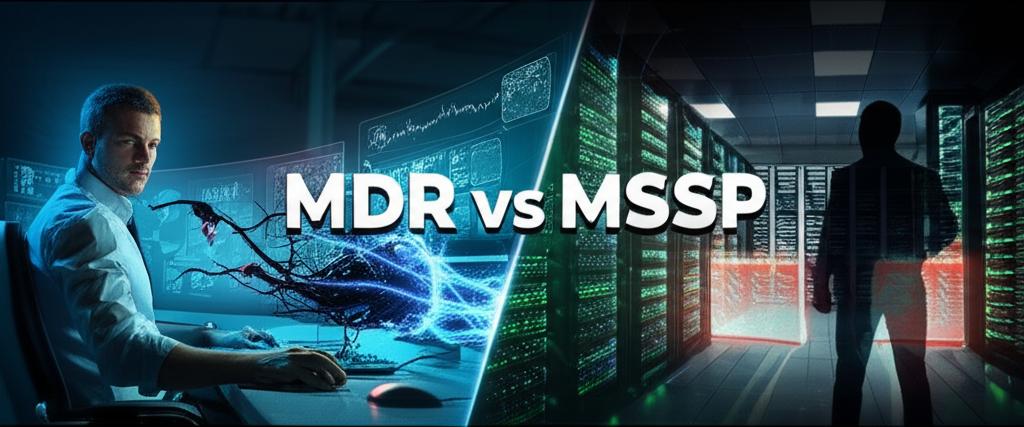MDR vs MSSP: The Ultimate Guide to Robust Cybersecurity Protection
In today’s ever-evolving threat landscape, businesses face constant pressure to bolster their cybersecurity defenses. Two prevalent solutions, Managed Detection and Response (MDR) and Managed Security Service Providers (MSSP), often emerge as top contenders. While both aim to enhance your security posture, they offer distinct approaches and service models. Understanding the nuanced differences between MDR vs MSSP is crucial for making an informed decision that aligns with your organization’s specific needs and risk profile.
What is MDR (Managed Detection and Response)?
Managed Detection and Response (MDR) is a sophisticated, proactive cybersecurity service that combines technology with human expertise to continuously hunt for threats, detect malicious activity, and respond to incidents. MDR goes beyond simply alerting you to threats; it actively investigates and mitigates them.
Key Characteristics of MDR:
- Proactive Threat Hunting: MDR teams don’t just wait for alerts; they actively search for stealthy threats that might bypass traditional defenses.
- 24/7 Monitoring & Analysis: Continuous monitoring of endpoints, networks, and cloud environments by expert security analysts.
- Rapid Incident Response: Once a threat is detected, MDR providers quickly investigate, contain, eradicate, and recover from the incident.
- Advanced Technologies: Utilizes a stack of advanced security tools, including Endpoint Detection and Response (EDR), Security Information and Event Management (SIEM), and User and Entity Behavior Analytics (UEBA).
- Human-Led Investigation: Highly skilled security analysts are at the core of MDR, providing deep investigative capabilities.
What is MSSP (Managed Security Service Provider)?
A Managed Security Service Provider (MSSP) offers outsourced monitoring and management of security devices and systems. MSSPs typically provide a broader range of foundational security services, focusing on prevention, compliance, and basic threat detection.
Key Characteristics of MSSP:
- Broad Service Portfolio: Offers a wide array of services like firewall management, intrusion detection systems (IDS) management, vulnerability management, compliance reporting, VPN management, and sometimes basic SIEM monitoring.
- Focus on Prevention & Compliance: Primarily concerned with preventing attacks and ensuring the client’s infrastructure meets regulatory compliance requirements.
- Alert-Centric: Often focuses on monitoring security tools and alerting clients to potential issues, with the client typically responsible for the actual response.
- Technology Management: Manages and maintains security hardware and software, ensuring they are updated and configured correctly.
- Scalability: Can be highly scalable, providing foundational security services to organizations of various sizes.
Key Differences: MDR vs. MSSP
While both services contribute to cybersecurity, their fundamental approaches and primary objectives diverge significantly. Here’s a comparative breakdown:
| Feature | MDR (Managed Detection and Response) | MSSP (Managed Security Service Provider) |
|---|---|---|
| Primary Focus | Proactive threat hunting, detection, and active incident response. | Prevention, monitoring security devices, compliance, and basic alerting. |
| Threat Response | Active investigation, containment, eradication, and recovery by the provider. | Typically alerts the client; response is primarily the client’s responsibility. |
| Scope of Coverage | Focuses on endpoints, networks, cloud environments for advanced threats. | Broader management of security infrastructure (firewalls, IDS, VPNs, etc.). |
| Technology Stack | Advanced EDR, SIEM, UEBA, threat intelligence platforms. | Firewalls, antivirus, IDS/IPS, vulnerability scanners, basic SIEM. |
| Expertise Level | Deep cybersecurity expertise, threat hunters, incident responders. | Broad security operations and infrastructure management. |
| Proactivity | Highly proactive (threat hunting, contextual analysis). | Generally reactive (responding to alerts from managed devices). |
When to Choose MDR
MDR is often the preferred choice for organizations that:
- Have a high risk tolerance for advanced threats and targeted attacks.
- Need 24/7 dedicated threat hunting and rapid incident response capabilities.
- Lack the internal security staff or expertise to handle sophisticated attacks.
- Operate in industries with stringent data protection requirements.
- Are looking for a partner to actively reduce their mean time to detect (MTTD) and mean time to respond (MTTR).
When to Choose MSSP
MSSP services are well-suited for organizations that:
- Need assistance with managing and monitoring their existing security infrastructure.
- Are primarily focused on compliance, vulnerability management, and foundational security.
- Have some internal security staff but need help with routine security operations.
- Have a limited budget for advanced security solutions but require external support.
- Are looking for a partner to ensure their security devices are properly configured and maintained.
Making the Right Choice for Your Business
The decision between MDR and MSSP isn’t always an either/or. Some organizations might even leverage a hybrid approach, using an MSSP for foundational security management and an MDR provider for advanced threat detection and response. Consider the following factors:
- Your Current Security Posture: What existing tools and internal expertise do you have?
- Risk Tolerance: How critical is rapid response to sophisticated threats for your business?
- Budget: MDR services are typically more expensive due to their advanced, human-intensive nature.
- Compliance Requirements: Does your industry have specific regulatory demands that an MSSP can help fulfill?
- Desired Level of Involvement: Do you want to be actively involved in incident response, or do you prefer a fully managed solution?
Conclusion
Both MDR and MSSP play vital roles in the cybersecurity ecosystem. While an MSSP offers comprehensive management of security infrastructure and compliance, MDR provides a deeper, more proactive defense against advanced and evasive threats with integrated incident response. Understanding your organizational needs, threat landscape, and resource limitations will guide you toward the optimal choice – or perhaps a blend of both – to achieve robust cybersecurity protection.







